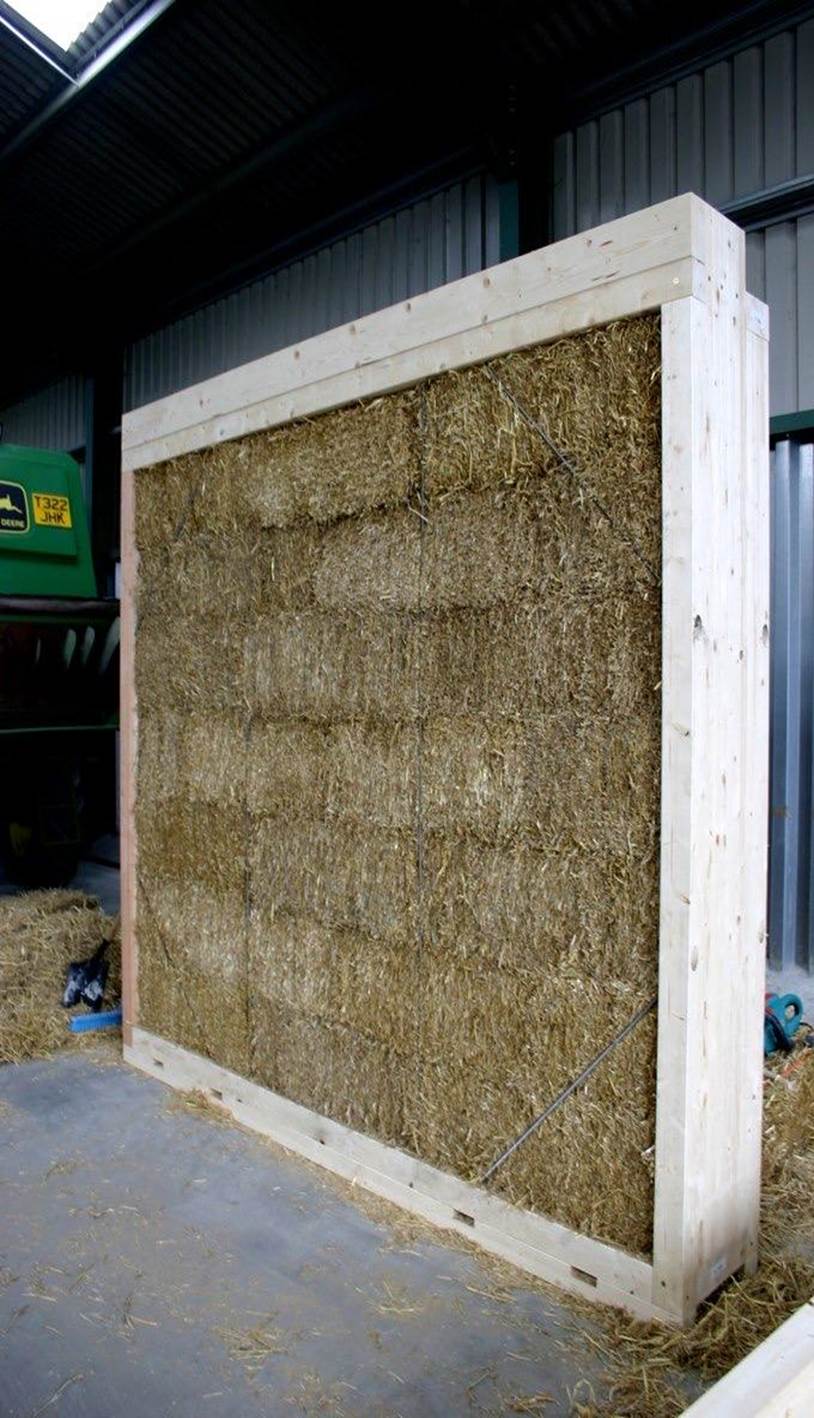The Everett Review of Britain’s Housing Sustainability
A new independent review has found that building homes with straw could enable the UK to meet its housing delivery targets while mitigating climate change.
New research advocates for factory-made straw homes to become the new dominant method of construction in the UK. The construction method has been coined by the research’s author and industry expert Andrew Everett as Modern Methods of Straw Construction (MMSC). MMSC involves tightly-packed straw bales being encased in timber as pre-made factory sections before being transported to site for assembly.
Everett says: “Solving the housing crisis and mitigating climate change are two of the greatest challenges facing the UK; investing in MMSC provides us with an opportunity to combat both. Surplus straw is available to construct all the homes the UK needs and more, while straw’s low cost will make housing affordable. Furthermore, building straw homes in factories enables fast, high-quality construction and provides a means of overcoming the sector’s labour shortages”.
The average UK home emits 50 tonnes of carbon dioxide in its construction, whereas a typical 3-bedroom straw house stores 7.5 tonnes. Building with straw provides an opportunity to capture carbon in the building’s fabric and store it, buying crucial time in the race to combat climate change. As straw and timber biodegrade, the waste legacy of these buildings is also far less than that of traditional brick and mortar construction. Environmentally straw is superior to man-made construction materials due to its carbon sequestration and limited waste legacy - the two main building materials; timber and straw, being biodegradable.
Although timber is utilised to encase straw panels and support some of the building’s load, straw bales provide structural support as well as insulation, with far less timber being required than timber-frame construction. MMSC therefore offers a means of combatting UK timber shortages which can lead to price fluctuations and construction delays. The UK is one of the least densely forested countries in Europe, with an estimated 13% of forest cover, compared to 46% for Europe and 31% worldwide. The UK is the second largest net importer of forestry products in the world, second only to China.
Other biodegradable construction material alternatives such as hemp would need to be grown on the UK’s limited agricultural land. As the UK imports 45% of all food consumed from abroad, replacing edible crops with non-edible alternatives such as hemp would prove counter-productive. Straw conversely, is an agricultural by-product, remaining once the more valuable part of the crop has been harvested. Although straw has a number of uses, including as animal bedding and biofuel, sufficient quantities remain to build 400,000 homes per year, 100,000 more than the UK’s current target.
Agricultural straw is abundant in many regions of the UK, particularly in the east of England, with large surpluses in Lincolnshire, Yorkshire and East Anglia. Straw is of low value for its relative volume meaning that straw bales are not financially viable to transport straw over long distances. Everett proposes that a government-funded MMSC factory should be established in Scunthorpe, close to areas of high straw surplus and North Sea ports where timber can be imported. This MMSC factory would serve as a catalyst to stimulate further private sector investment in MMSC once supply chains and sufficient talent pools have been established.
The BPF has welcomed the review. Melanie Leech, the BPF Chief Executive, has said: “We know that buildings are a huge source of carbon emissions, in both construction and operation, and we must be open to new ways of working and new technologies if we are to deliver a net zero carbon property sector by 2050. This report is a welcome contribution to the debate around how we become a more sustainable industry and gives further weight to the role that modern methods of construction, in all its forms, can play in the future of our built environment.”
The full review can be read here: https://everettreview.org/

